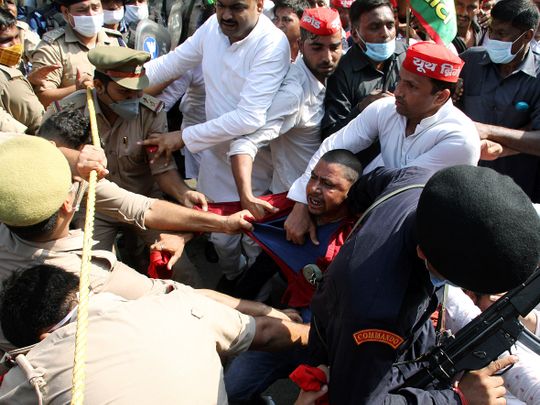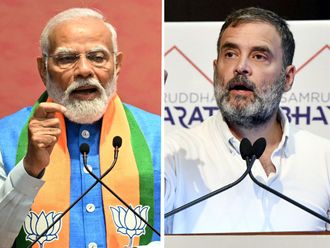
It’s all on video: a car just ran over innocent farmers who were protesting. Among the dead is a journalist.
On social media, the debate, the spin, is about who started the violence in Lakhimpur Khiri district of Uttar Pradesh. Some claim the farmers started the violence, broke the car’s windscreen and so on. The troubling thing about this (most likely false) claim is that it suggests the people in the minister’s car were justified in running the car over the protesters. Four lives for one windscreen.
That’s just one example of how violence as a means to forge political consensus has become routine and acceptable in the country of Mahatma Gandhi. In just the last few days, we’ve had a vigilante group vandalise the official residence of a member of Parliament in the heart of Delhi’s government enclave.
The mob’s problem was that the MP in question, Asaduddin Owaisi, speaks up for the rights of India’s largest religious minority. They even assaulted his elderly caretaker, who happens to be Hindu.
This is not the first time Barrister Owaisi’s house has been vandalised, but no security is provided to prevent such attacks. The lack of security is a symbol of a new normal: violence as a legitimate form of politics.
Fundamentalists in India
There are two problems with fundamentalists in India who claim to represent the majority. One is their worldview, which runs counter to the spirit of the Indian Constitution, mainly the idea that all citizens are equal and must be treated as equal. The second problem is that they believe in using violence in enforcing this idea that those belonging to the majority are, to quote Orwell, more equal than others.
The two ideas are separate. We may find the first idea offensive, but the right to free speech gives them the right to offend. The Constitution gives people the freedom to say they don’t agree with the Constitution. But the use of violence is not acceptable. There cannot be two views about political violence.
The use of violence for political objectives, according to most dictionaries, amounts to terrorism. There were many in the Indian freedom movement who thought they needed to use violence to overthrown British colonial rule. But none of them gave the British as hard a time as Mahatma Gandhi, who believed non-violent means were more powerful.
He thought violence as a means did not produce lasting political results. A cycle of political violence hurts everyone: an eye for an eye made the whole world blind.
A Muslim bangle seller in Indore is beaten up for no rhyme or reason, then charged with false cases. A ‘riot’ in Delhi was engineered to break up peaceful protests against a new law. From sporadic violence engineered to enforce an economic boycott of poor Muslims, to large-scale engineered violence meant to deter Muslims from protesting against injustice, there seems to be violence everywhere.
Facing brunt of political violence
The massacre in Lakhimpur Khiri tells you that everyone is going to face the brunt of political violence sooner or later. It is not just going to be religious minorities, but just about anyone who dares to disagree with the idea of majoritarian politics forcing black laws upon the people.
On every death and birth anniversary of Mahatma Gandhi, we see people on social media hailing his assassin, Nathuram Godse, who thought his political disagreement with Gandhi necessitated an assassination. This made him the first terrorist of independent India.
Sadly, the BJP government that comes down hard on Twitter and social media companies often, does not seem to pressurise them to censor such celebration of terrorism on social media.
This is a question the majoritarian fundamentalists of India need to answer: why is your politics so intrinsically linked with violence? Why do political views transform so easily into acts of violence?
The use of violence is obviously to terrorise people into accepting a political viewpoint. It is therefore an acknowledgement that the political worldview is too weak by itself to persuade people.
This is what Gandhi meant when he said violence was a weapon of the weak. Ahimsa or non-violence is used by those who are confident that they are speaking or doing the right thing — offering the truth to persuade the world.
It is the truth, for example, that all human beings are born equal. It is those who disagree with this truth who feel the need to take to violence.
Simply put, we need a new political compact. No matter what your politics is, no matter what your political view point is, violence is not an acceptable means to make your point. India’s ruling party must make its stand clear on political violence.
And if they claim to be opposed to it, they must explain why the ruling BJP government in Uttar Pradesh is refusing to arrest a BJP minister’s son, who eyewitnesses say was in the car that ran over innocent protesters.









